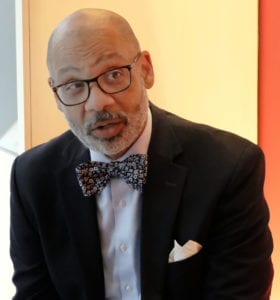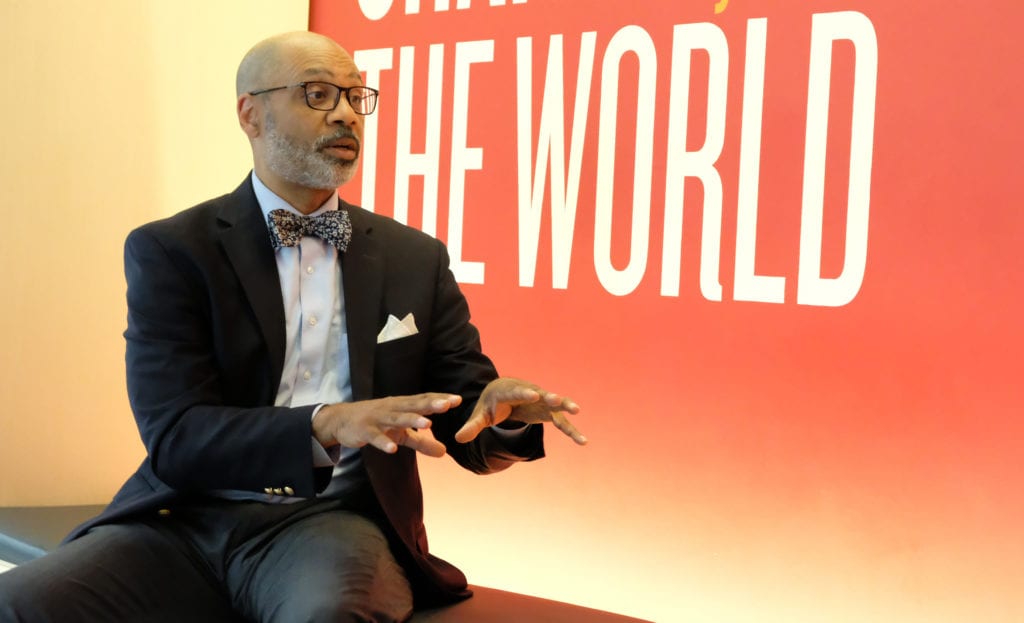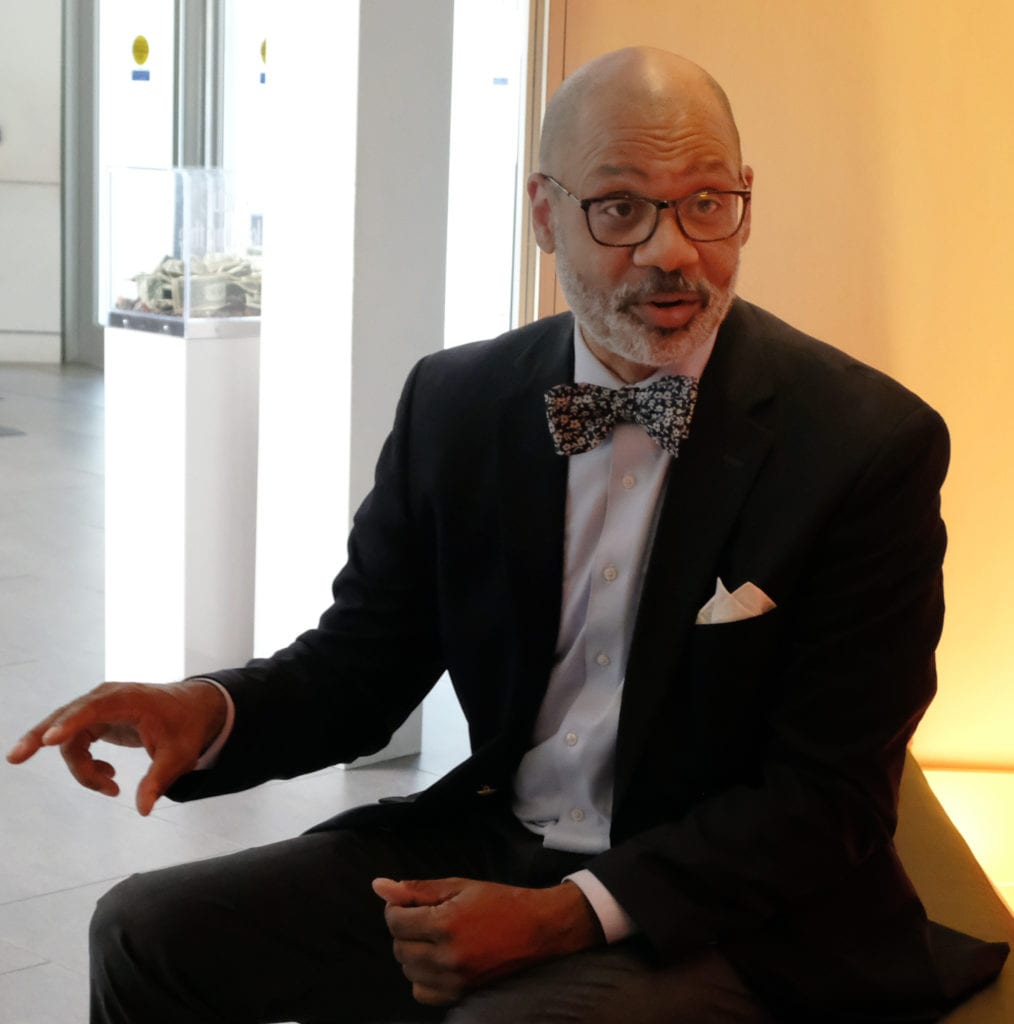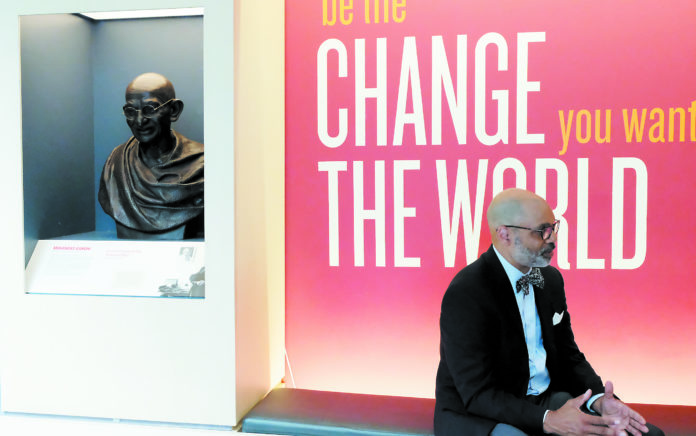Twenty years ago, then Rhodes College professor Russell Wigginton approached the Tri-State Defender looking to access the newspaper’s archives for his students to write research papers. That outreach evolved to him writing the first 50-year history of the newspaper.
Calling the experience “one of my professional joys in life,” the recently-appointed new president of the National Civil Rights Museum made a point to connect that experience to the museum during his first interview about the position that he will assume Aug. 1.
“I want you to know that while I knew the importance of primary sources, obviously as a practicing historian, it struck something in me with how the young people, college students at the time, how history started coming to life to them through primary sources,” Wigginton said.
“Keep in mind, the students in Rhodes, most of whom didn’t come from Memphis and didn’t even know about the Tri-State Defender, when they started reading what the Tri-State Defender had been writing about for 50 years, it was like history started coming to life.”
And said Wigginton, “I think there’s opportunity for us here to find interesting ways to lift up primary sources again, and for some people for the very first time. … That experience with Tri-State Defender really reminded me that we can do all of these fancy technological things now, but there’s still something magical about lifting the words off a page of a magazine or of a newspaper that’s telling the story of its people in an era that was challenging for all of us.”
Here are excerpts from Wigginton’s conversation with TSD Associate Publisher/Executive Editor Karanja A. Ajanaku.

Karanja A. Ajanaku: So it’s three months after you’ve started and you’re looking back. What have you done in that three months?
Dr. Russell Wigginton: … I will have talked and had a one-on-one conversation with every staff member who works at this museum. They will have gotten to know me better and I would have gotten to know them better. I will have a sense of why they work here, what are they passionate about, how can I be helpful to their work, and hopefully they feel comfortable asking me the kind of questions that they get to know me better. …
I’m a relationship-oriented person. This work is hard. It takes commitment, it takes passion and you have to be with people who you feel like are in it with you. … I will also have spent important time with the board. These are people I know as I’ve been on the board for 11 years, but I want to have different kinds of conversations with them, obviously sitting from this role.
I want to know why they are committed and invested, both philanthropically and otherwise in this place, and I want to know what they’re hoping for when we project to 2025. I will have started to have important conversations with established relationships in Memphis, but also I think opportunity for new relationships in Memphis.
And a piece that I’m particularly keen on is having conversations nationally with corporations and foundations and philanthropic leaders about the museum and the power of the museum. Those conversations will be driven by what I learned from the staff and the board. I certainly have some ideas about what the target areas will be, but this is a collective team effort. This is not the Russ Wigginton show. …
K. Ajanaku: So, I do know that there was some interest in trying to promote from within the staff. Do you have to address that in any kind of way?
Dr. Wigginton: I don’t know. What I can say is I think people who know me know I’m authentic and I’m transparent and I lead with relationships. In my mind, there’s no addressing to be done in that regard. If there is some addressing, it will manifest. But I don’t feel in any way that there’s anything other than goodwill and positive outlook.
It does help that I have established relationships with many of the senior staff at this organization. These are people who I’ve worked with, served on committees with, done things for, had things done for me on behalf of the museum for years. … I’m very confident that we’ll be up and running and clicking on all cylinders pretty quickly.
K. Ajanaku: (Former President Terri Lee) Freeman leaves (and) catches many of us by surprise. Do you think, “whoa, I’d like to do that (be president)? Or, does someone reach out to you and say, “Hey, would you consider this?”
Dr. Wigginton: It was probably a combination. … You know my academic background. I’ve had a 25-year relationship with this museum. And when you do the kind of work that I do, you can’t help but think about what an honor it would be to lead this kind of organization. And what often happens is there are people, who are advocates for the museum, thinking about who might be good candidates for that.
So there were certainly people who raised the question with me. I was in a fortunate position where I’ve had wonderful career at Rhodes College, was deeply enjoying my work for Tennessee SCORE and had the opportunity to think about this position in a really significant way before raising my hand to say I would like some degree of consideration, whatever that may be.
K. Ajanaku: … Ms. Freeman … talked about her desire to have the museum be an entity where things that are unfolding now could be discussed and (the museum) be a center point … . I think that she moved the needle in that regard. Is that something that you can see continuing?
Dr. Wigginton: First of all, she did an amazing job as the leader here by any way you want to measure that. And that is, I would say, one of the signature parts of her legacy. I think that’s really important for several reasons. One is it’s a wonderful way to captivate and inspire and engage the next generation of people, who may not appreciate the historical work that this museum stands for… . One of the things I’m particularly interested in is finding those points of connection and intersection. And I think being a historian influences that.
There are themes, there are patterns, there are examples that are relevant today that can connect back to yesterday or yester-year. And I’m particularly interested in finding those intersections and lifting them up. I am a teacher. I think you can teach in a lot of different ways. It doesn’t have to be in a classroom and it doesn’t have to be the Socratic method. …
Part of teaching is also inspiring and this institution is poised to do that across a broad swath of people. And you can’t divorce the tenor of the times from that if you’re going to be as effective of a teacher and an educational resource I think this museum can be.

K. Ajanaku: In the press release (about his selection) you talked about being the person in charge during the times that we’re in. I’m thinking that you’re talking about the social awareness, the social consciousness, George Floyd, all those kinds of things.
Dr. Wigginton: Sure. I’m thinking about those moments and then you think about those historical moments that we point to, Emmett Till, etc. … I’m also thinking about, dare I say the less prominent moments, because I believe when you start talking about human and civil rights, it’s about every day, not just how do we respond when something traumatic happens. …
And so I’m compelled by those dramatic moments, but also those moments where we’re just moseying along going about our business, but we need to have a consciousness and an awareness and what I would call an ongoing conversation that may or may not be comfortable for everybody all the time. We can be a platform and should be a platform for which that takes place, and certainly (former presidents) Beverly Robertson and Terri Freeman laid the groundwork for me to be able to propel that forward.
K. Ajanaku: Let me just jump a little bit to … your history background. Can you reach back in your memory bank for the first time you thought of any value for history. What made you go down that road?
Dr. Wigginton: … As a child, I was the kid who would stand in the corner when my grandparents and their friends were talking about life. When my friends, cousins, siblings were outside playing, I went outside and played too, but I’d take a break and come in and just kind of stand in the corner and get an earful. And I was mesmerized by, I think, how they could contextualize the challenges of life and still be positive people and still find joy.
Thinking about my great-grandfather, who was a redcap for the railroad for 50 years and the kind of joy he had in his life; the kind of life he was able to provide for his family. The fact that he toted bags for a living, but he had a ceramic shop, where he spent time and was a very talented artist. As a child, I didn’t understand all the pieces, but it was compelling to me and I never forgot it … such that I wrote a dissertation on Black railroad workers for the same railroad that he worked on. …
I didn’t know I was going to be a historian, but I knew there was something about an appreciation from our people and our past that was a part of me and that I had an obligation and a desire to understand and appreciate at the highest level.
K. Ajanaku: You’ve been on the board for a number of years and you have a history with the museum, you’ve got your ears to the community. Have you ever heard anyone be unhappy with the museum? And if so, what were they unhappy about and how might that be something you have to address?
Dr. Wigginton: I haven’t heard it a lot, but I’m always conscious of the fact that not everybody has as compelling of an experience as you would hope they would. What I will say is I heard it more pre-renovation in that the nature of what the museum was before the renovation made it harder to get the full experience and get it in a way that we’ve come to expect to have experiences. … So it was kind of more about being caught in the technological advancement stage. … What I’ve never heard is there’s a lack of professionalism and warmth and authenticity around telling the story. …
I think (there is) still opportunity, however, to find interesting and unique ways to target and engage more of the Memphis community. People know about it, but a lot of times when something’s in your own backyard, it gets taken for granted. I think we have to do some things that are intentionally Memphis to make sure that this entire community is galvanized by a space that a whole lot of people across this country and world come here just to visit.
K. Ajanaku: So 30 years … (the NCRM) is getting ready to acknowledge. I actually can remember being on the (old Shelby County) Courthouse steps when Judge (D’Army) Bailey … (secured the Lorraine Motel, now the centerpiece of the museum, from foreclosure.) … Talk to me a bit about 30 years and, to the degree that you can, about what you think the focus might be.
Dr. Wigginton: As somebody who had an established relationship with Judge Bailey myself, and then obviously having been a part of the board and knowing the museum for more than a decade … I think of the museum from a couple of different perspectives. I think if you were to ask 30 years ago if this museum would have over 300,000 visitors in its peak year, it would have been mind-blowing for people at that time. I think if you would have talked about that people come from all over the world to experience this place, it would have been a shock at that time. I also think that if you were to ask people 30 years ago if we would still be having some of the conversations today that we were having 50 years ago, that might be troubling too.

So to me, when you mix all of that up, I think we have a responsibility to capture all of the goodness and all of the tender spots of that when we present ourselves. And I think you can do that in ways that still allow people to be engaged. I mean, you can’t visit this museum and fully take it in and not have some moments of discomfort. … It doesn’t matter what your background is. This place should cause some degree of discomfort along the way, whether it’s guilt, anger, sadness, what have you.
But I also think it’s one of those secure places where you should be able to experience that and feel safe in doing so and feel like your fellow human could be feeling and experiencing something very different than you, but you can still do it in this space.
And then we have an obligation to make sure our curriculum and our ways of engaging people when they’re physically not here also feel supportive. So, it’s not just a moment in time, but it’s an experience that extends beyond the two to three hours that you may be in this physical space.



